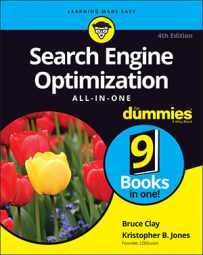When you expand into the international market, you have three options when it comes to your site architecture and SEO: one site, multiple sites, or a combination of the two. With one site, you can take advantage of subdomains and subdirectories that point to pages in different languages or are geared toward specific countries. Multiple sites require you to build an individual site for every country with a local ccTLD, preferably hosted in the country.
Single sites
Having a single site and targeting using subdomains provides you with several benefits. It’s easy to set up, you only have to keep track of one server and one domain, and you can keep all your files in one place.
All the incoming links and all your web traffic point to one domain, rather than being split between two or more sites. Although lots of traffic doesn’t necessarily mean a high conversion rate, it sure doesn’t hurt.
In addition, if you use a single site, you will have more pages in the search engine’s index, which is the search engine’s database of web pages that it periodically searches to offer up to users for search queries. Grouping by language prevents duplicate content. Remember, search engines remove a site from their search results if they think it is duplicate content.
On the other hand, here are some disadvantages of a single-site approach:
If your home page is in the “wrong” language, it can be confusing for your international users. To avoid this problem, you would need to create an entry page that allows users to select what language they want to view the site in. These pages tend to be text-light, however, and not good for search engines.
Another disadvantage can be a home page that ranks highly in only one language. Having your site pop up high in the rankings for German is great, but what if you also want to do business in the English-speaking world and you’re nowhere near the top 100 search results? You have to spend the same amount of effort on each section of your site, which can be time-consuming.
If you were to group by country, you are risking duplicate content. Although it’s okay to have different pages in different languages, if you have separate pages for each Spanish-speaking country but don’t provide unique content, the search engines read repeat pages as duplicate content and don’t count them.
If you do decide that you want to maintain a single site, you can do some of the following:
Specify the target country for each sub-domain by using Google Search Console. To set a geographic target, follow these steps:
Sign in to Google Search Console by using your Google account.
Click the URL for the site that you want.
Click Search Traffic in the left navigation menu and then click International Targeting.
Click the Country tab and then use the drop-down selection menu to choose the country you want to target with this domain.
Redirect country-specific domains to the appropriate sub-domain or subdirectory.
Make internal and external links language-appropriate and use the country-specific domains.
Multiple sites
Having multiple sites means that you set up a separate domain for each country. Expanding to new countries is technically easy. You can add sites one at a time, as needed, without impacting any of your current websites. Domains with local ccTLDs usually rank well in multiple country-specific search engines.
Certain countries require you to host your site on one of their servers in order to qualify for a ccTLD. But even if it’s not a requirement, it may be a good practice if search engines try to match your server location to your physical location. However, search engines may decrease the weight of this ranking signal as more sites move to cloud hosting systems, where files and resources are stored and managed on virtual servers, to save costs.
The most obvious disadvantage of this approach is that maintenance is harder. Having more sites equals having more sites to update, more servers to troubleshoot, and more domains to keep registered. Additionally, you wind up putting in more time to your SEO. Having multiple sites means multiple SEO efforts. Dividing your time and resources could cause it to take longer for your main .com site to rise in the rankings.
With multiple sites, you’re forced to target countries instead of languages. The world has many Spanish-speaking countries, for example, and maintaining a site focused on each and every country can get costly and time consuming.
Some tips for this approach include
Target the country in Google Search Console.
Make sure that external links have appropriate anchor text and link to the correct country-specific domains.
The blended approach
If you have an international site on the .com top-level domain, you can use a blended approach, which combines the methods used for both single and multiple sites. This approach might be the most realistic for worldwide presence. With this approach, you can start with a .com site and then build country-specific sites, as needed. Creating, maintaining, and updating this site setup can cost you, however, because you need to keep every site up-to-date and in step with all the others.
Here are some tips for implementing the blended approach:
Specify countries in Google Search Console, but your international site should be left without a specific target country.
Link your multiple country sites carefully and logically. External links should be logical. Keep the globally applicable content on the international site and country-specific information on country-specific sites.
You can use IP sniffing (using a program to analyze the traffic as it comes to your site) to automatically detect users’ location and serve up a translation in the local language to direct them to the proper site. If you do that, always let them know that they are leaving the current domain and going to a new domain.

